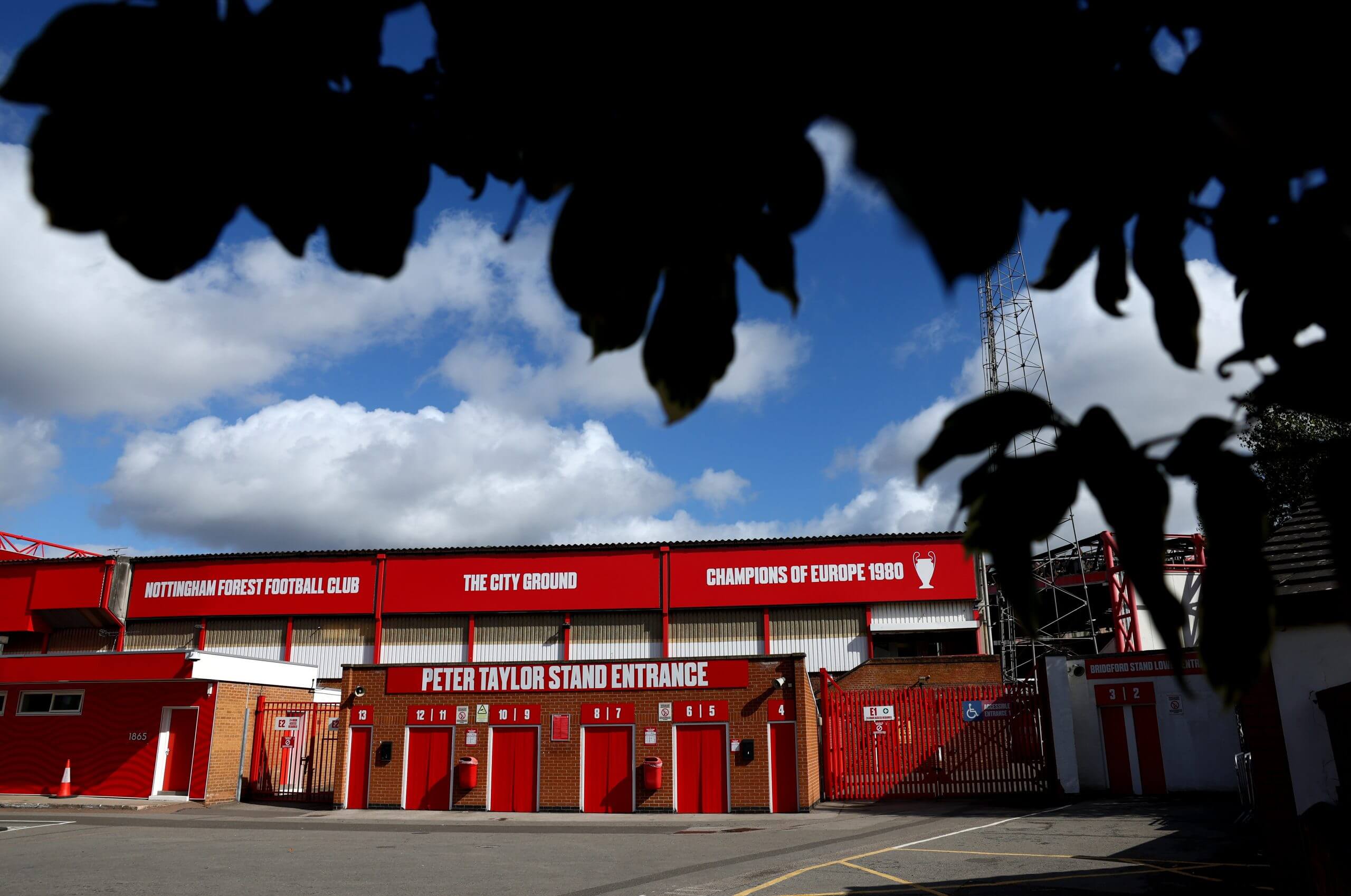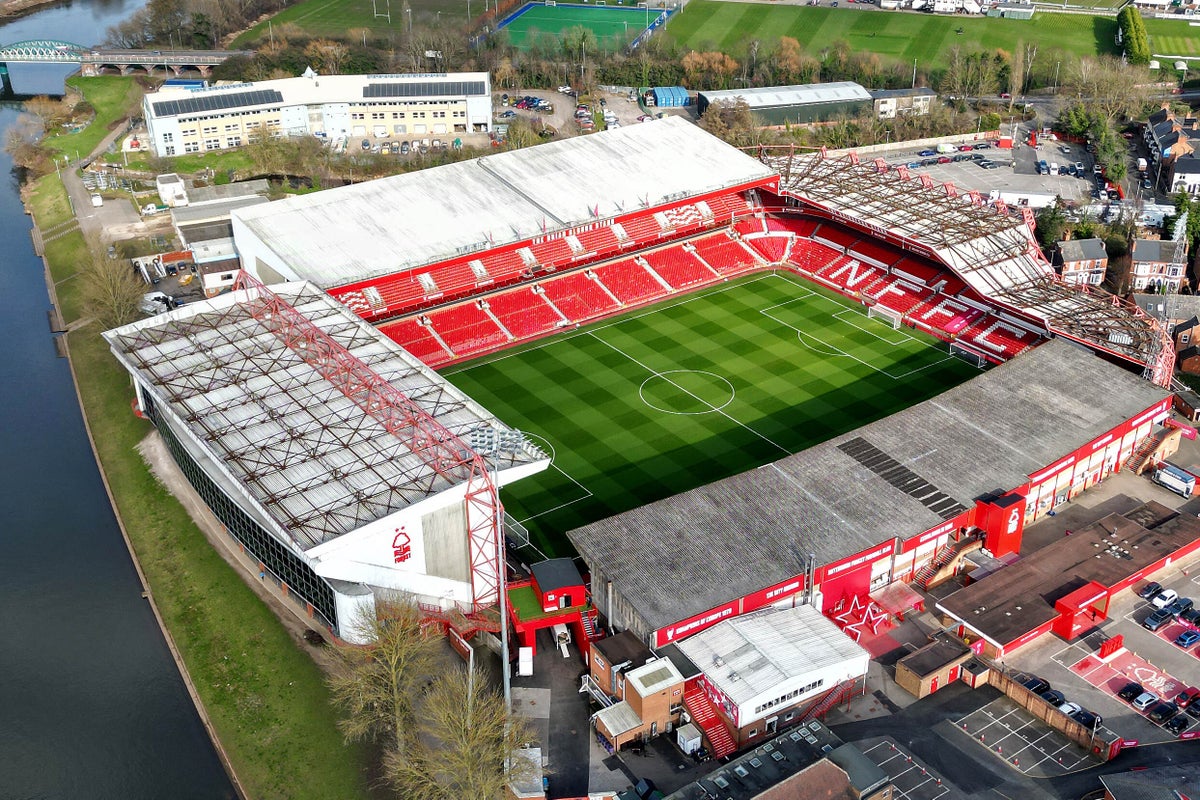Nottingham Forest is appointing the architects who oversaw Liverpool's recent Anfield expansion to help with new plans to transform the City Ground into a stadium with a capacity of up to 45,000 spectators.
Three months after receiving planning permission to begin the long-awaited redevelopment of their home stadium, Forest have now decided to put those plans on hold in favor of a more ambitious redevelopment of the stadium, which has been their home ground on the River Trent since 1898.
The Premier League club had previously planned to demolish the Peter Taylor Stand – the oldest and smallest of the four stands at the City Ground – and replace it with an entirely new structure, increasing capacity from just over 30,000 to around 35,000. Work should begin next year.

New plans for the City Ground may include building over the existing Peter Taylor Stand rather than demolishing it and building a replacement (Dan Istitene/Getty Images)
But the sweeping changes also include examining alternative proposals to remove the roof of the Peter Taylor Stadium and then build over the existing structure to make it one of the largest stands in English football, tripling the number of seats to 15,000. To put it into context, that would be 1,500 more than the largest stand at Chelsea's Stamford Bridge can hold. The new stand would have a height of 58 m (190 ft), whereas the previous application proposed a height of 38 m.
At the same time, Forest want to fill the corners on either side of the Trent End and connect it to the adjacent stands to create around 5,000 more seats.
Forest's recent correspondence with Rushcliffe Borough Council informs the local authority that new plans are being finalized. It also contains a site plan created by the London architectural firm KSS Group. Konstantinos Chatzimanolis, a former architect at Foster + Partners, is also heavily involved, having been appointed managing director of the Evangelos Marinakis empire earlier this year, which includes Forest, Greek club Olympiacos and Rio Ave of Portugal.
KSS had previously overseen the expansion of Liverpool's stadium, remodeling two of the stands at Anfield to increase the total capacity to over 61,000.
The company's portfolio also includes new training grounds at Liverpool and Leicester City and until recently oversaw Leeds United's plans to modernize and expand its Elland Road stadium, using designs very similar to those at Anfield. Leeds has since decided against using KSS and last week it was announced that another firm, Manchester-based BDP, had taken on the project.
One of the more interesting parts of Forest's plans is that they are re-examining whether it is possible to build a new Peter Taylor Stand around the existing structure without causing the disruption that would be involved if it were demolished when construction work begins. This was also done at Anfield to ensure that capacity did not have to be dramatically reduced because the stadium was effectively only three-quarters operational on match days.
First and foremost, Forest will need to seek planning permission again and this will be far from easy given the challenges they faced before gaining approval for their previous proposals.
The club announced plans for a new Peter Taylor Stand in February 2019 and initially expected work to begin in summer 2020. As it turned out, it took six and a half years to get permission for a redevelopment, subject to planning conditions, which Forest, after some consideration, concluded was no longer in keeping with their ambitions.
The delays were significant and although the idea was ultimately shelved, at one point the club seriously considered abandoning the City Ground altogether and building a new 50,000 capacity stadium at Toton, south-west of its home town on the Nottinghamshire-Derbyshire border. Instead, Forest has commissioned property experts Savills to inform the relevant authorities that they will be submitting a new planning application for their existing property.
“This will increase the capacity of the stadium from the current 30,000 spectators to 43,000/45,000 spectators,” explains Savills director Chris Potts in a 15-page letter. “The exact capacity will be known when the final designs are finalized.”
There is no mention of a time frame or what would happen in the worst case scenario if Forest, currently 17th in the 20-team table, are relegated from England's top flight this season or in the near future. However, this has also been a problem in two of the previous three seasons and has never affected the desire at the club's top leadership to create what they believe is the largest stadium in the East Midlands.

Forest returned to European football this season after three decades away from football and want a home stadium that matches their ambitions (Michael Regan/Getty Images)
Potts goes on to say that Forest wants to take on the role of “good neighbor” – knowing that there had been significant resistance from some councilors and residents’ associations in the previous planning process.
If Forest are to win approval again, they will have to convince authorities that the benefits outweigh the problems caused by a significant increase in spectator numbers and road traffic, causing problems with pollution, parking and congestion in a largely residential area.
The updated plans do not include the 12-storey block of 170 apartments that would have stood next to the stadium in the previous plan. This should, in theory, increase Forest's chances of approval. If they get their way, an agreement awaits to buy the freehold for the site on which the stadium stands from Nottingham City Council, their current landlords.
Forest are moving on without the involvement of Benoy, the architectural firm led by their former chairman Tom Cartledge, who previously oversaw their redevelopment project before leaving the City Ground in November last year.
Before his departure, the club briefly examined whether it was possible to follow Tottenham Hotspur's example and build an entirely new stadium on the existing site. However, the decision at the time was that there was not enough space due to restrictions imposed by the neighboring river.
Plans have also been drawn up to expand the Bridgford Stand, the part of the ground which houses away fans. However, the current focus is on developing other parts of the stadium as part of a project fully funded by Marinakis which, if approved, would also include the removal of the 'corner box' hospitality area between the Trent End and Brian Clough Stand.
